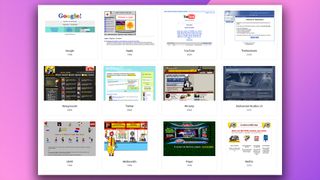Karen McGrane on the future of content strategy
UX expert Karen McGrane chats to Martin Cooper about Google Glass, information architecture and why we should all get on board the content strategy train as soon as possible.
“Can you imagine if the ship’s computer in Star Trek was like ‘open tag, b, close tag?’ That’s not the future! I want to make the Star Trek computer work really well. That’s my goal in life!” And that pretty much sets the tone for our chat with Karen McGrane.
A renowned speaker, author and practitioner in the field of content strategy, Karen is a high-voltage geek. What’s more, she has an utterly infectious love of technology and the web.
In the space of just over 30 minutes she laughs, waves and gallops through a truly amazing menu of technologies. One minute she’s talking Star Trek, the next Bletchley Park. Moments later she’s charged through speech recognition, Solaris workstations, punched cards, VAX, Apple, Gutenberg’s Press and AOL. It’s like being led at warp speed through the world’s biggest tech museum by the world’s most excitable guide.
“Google Glass? No I haven’t tried it,” she grins. “I think it’s going to be the Segway of mobile.”
Glass ceiling
Such quickfire quips come at you with complete spontaneity. It’s not for comedic effect, though. Every point she throws out there ties elegantly into her lifelong passions for information architecture and content strategy.
As such, she completes her take on Google Glass thus: “Looking at some of the UI guidelines and the publishing specs they released a couple of weeks ago, they’re going to give you these HTML templates and you’re going to funnel your content into them. Great! Is your content going to be structured to render appropriately on those screens? I’m not suggesting we all go out and restructure our content for Google Glass. What I am saying is: if you have that underlying content already, great! You’re better set up for the future.”
What is content strategy?
McGrane is best known as a content strategist, but what exactly is content strategy? “The idea that content is being published out of a database and it can go anywhere … [adaptive content] is a massive transformation,” she says. “You know, so much of what we do is trying to make the web behave like print.
"Content strategy is really helping the world understand what makes the web different from print and how we fully take advantage of this new medium. It’s exciting! It’s Gutenberg-level stuff.”

With that cleared up, we move to more biographical pastures: McGrane works as an independent consultant and has been running her own company since 2006.
“I focus on assisting companies that need help with mobile, of which there are many,” she explains. “I work from home – it’s delightful. I’d say I’m in New York two weeks out of every month. Beyond that I do quite a bit of client travel and conference speaking.”
Lightning bolt moment
A decade before starting up her business, McGrane can recall first hearing the words ‘information architecture’ – which in effect, she says, kickstarted her career.
“It was in 1996. It was like I was hit by a lightning bolt,” she reminisces. “What I loved about it was the idea that it [information architecture] combined the linguistic with the categorical, the structural nature of findability with the physical, and the tactile with the look and feel side of design. It was right there in the name: information architecture.”
In through the side door
So after this epiphany, did McGrane follow the self-taught pathway, or go seeking more traditional training? “It’s kind of a truism in this industry: everybody started out doing something else and came in through a side entrance,” she says.
“I’m one of the rare birds who came in right through the front door and I have never done anything else. I have a graduate degree in technical communication and human computer interaction from Rensselaer Polytechnic Institute. It’s an engineering school in upstate New York. Essentially, I have a graduate degree in being a UX designer, with a focus on information architecture and content strategy.”
Early computers
With information architecture arriving in her life like a force of nature, we wondered if technology itself made a similarly dramatic entrance. “You know, I don’t think there was one big moment – I think there was one long stretch of moments throughout my life,” she says. “My school district – I grew up outside Minneapolis, Minnesota – had a focus on technology. We had computers early on.
"I remember working on the old Apple II and Apple IIe machines when I was quite young. I think they had a mainframe in the closet and stacks of punched cards. I was exposed to the traditional green screens and command line way of computing. I feel like I’ve used computers my whole life. They were always there.”
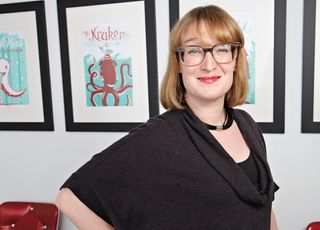
And the first time she encountered the internet? “Wow! I remember poking around on some of the early systems: CompuServe, Prodigy and AOL. We all had an AOL account.”
When she started graduate school in 1995, she remembers the new beta of Netscape came out for Solaris workstation. “The computer lab would light up. We’d all run and download it! Looking back it was exciting. You were watching the web explode. I only regret not buying a million domain names!”
Content vs structure
After leaving the cloistered world of academia, McGrane landed her first job as an information architect with Razorfish. “I was the first IA. I was the first person with any kind of UX background, hired when Razorfish was like 30 people. And I have never done anything else!”
“I think I’m so lucky in that this job [matches] how my brain works,” she adds. “I feel really lucky to [have found] a career that allows me to do what I do best. I was very lucky the internet came along right when it did. It seemed like fate.”
Content vs structure
All this sets us to wondering: when it comes to books, films – anything with a narrative framework – which does she find most alluring: content or structure? “Easily the structure and the management of it … the engineering system behind it,” is her response.
“I love a good story. I love a solid narrative. I love a good turn of phrase and I enjoy the act of writing. What’s really interesting is trying to reverse engineer something. It’s pattern recognition really. You can let [structure] just wash over you or you can be the kind of person who is constantly trying to figure out how the system works.
"So yeah, I’m definitely a systems person. If I go to Disneyland, am I letting it wash over me? No. I’m like: ‘why is this so great? What are they doing to make this a great experience?’ I’d say that’s a common trait in UX professionals. You can’t just enjoy something. You have to try and work out why you’re enjoying it!”
Darting back to her compulsive reverse engineering of life, the universe and everything, she quips: ”I can’t even ride an elevator without trying to work out the logic. How do they work out which floor to rest on?”
Deeply idealistic
With her love of content proved and her geek credentials underlined, we’re keen to explore a contrasting, steely side of McGrane’s character. Head over to her website and hunt down the posting Uncle Sam Wants You (January 2013). There you’ll find a link to her An Event Apart DC 2012 talk and also a full written transcription. The standout quote is: ‘Do you really believe that America is a meritocracy if that information isn’t available on mobile? Because it’s not’.
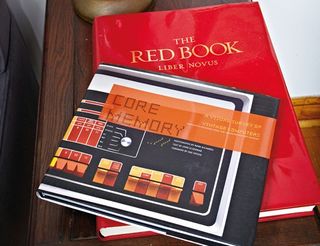
“I’m deeply idealistic,” McGrane asserts, “I’m very lucky to have a platform to speak from and my job is to make the web … to make the world a better place. One of the things that’s really electrified me about mobile is that there are mobile-only users. It’s so easy for people like us to fall into the trap of thinking that every user is like us, that every user has multiple computers and a broadband connection. [It’s easy to believe] that the internet is just part of the fabric of everyday life. I’ve had an internet connection at home since 1994.”
Being connected
“Traditionally,” she continues, “it’s populations who are disadvantaged who are less likely to have an internet connection. Think about all of the things that are not available to you if you can’t get online. Something like 80 per cent of Fortune 500 companies only advertise their jobs online. You can’t find a job posting if you’re not on the internet. Think about all the resources that are available for education, for housing, for government services and affairs.”
The quips are gone now and her sentences become short and staccato. “Does everybody in America have access to the same information? To the same services? To the same opportunities? You don’t if you lack access to the internet.”
Pausing to draw breath, McGrane drives home her point: “I believe we have a responsibility to get this information out there where everybody can access it. For education, housing, jobs, banking, healthcare. Mobile isn’t a nice-to-have. Mobile is essential if you want to reach the people who need that information the most.”
Then she nods and stops talking, using silence as amplification.
Getting it right
So who is actually getting content strategy right? “The United States released a Digital Government Strategy that is very forward looking. The recommendations are the sorts of thing I’d recommend to a client if they were a large enterprise. GOV.UK has been doing amazing things in the UK space, too.”
That begs the question of course, what smaller companies, unable to afford to hire either a full time content strategist or a part time consultant, should do. “On any given project it comes down to your team’s makeup, on their backgrounds, interests and aptitudes. I know a lot of developers who are doing content modelling and they’re figuring out how the content should be structured. They are the people who have to cope with the eleventh hour shitstorm, when somebody needs to figure out the content at the end of a project.”
Basic principles
Changing gear and direction, McGrane expands her idea: ”Somebody has got to do content strategy but I don’t think it needs to be somebody with the title ‘content strategist’. It’s rather a controversial view in UX circles, but I think we have a responsibility to teach people the basic principles of user experience design, user research and information architecture. We have a responsibility to get those ideas out there to the broader design and development community. We shouldn’t just mint people who have our special UX or content strategy title. I want to be sure that whoever looks after content has the tools to do so.”
As we wrap up, it’s impossible to resist invoking McGrane’s geekiness again. Just for one last time. Which technology does she think will change the world when touch has become passé?
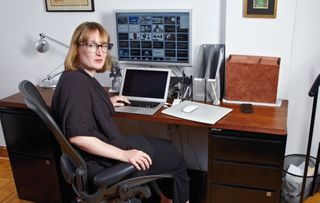
“I’m very interested in when speech-based interfaces are a reality. Everybody pokes fun at Siri. But, you know, people [laughed] at touchscreens for the last 20 years and then, one day, touchscreens turned up and they worked perfectly – and transformed how we interact with technology in ways we never anticipated. The same thing is going to happen with speech.”
Importance of speech
Barely pausing for breath, she continues: “Speech is going to change everything. It’s an example of why adaptive content is so important. If you think about it: what happens now if your content needs to be read when somebody’s driving a car. Think about all the presentation information built into our content to describe how it should be styled. It needs to be somehow stripped out for audio interfaces.
"I like to give the example of italic verses emphasis as semantic tags. People say, what’s the difference? Every major browser is going to render emphasis as italics. So, who cares? What happens when it’s an audio interface? Suddenly emphasis does mean something very different from italics. It’s a simple example if you can wrap your head around that.”
She closes with a simple summary of her mission: “Our content really does have to go everywhere. If you start trying to solve that problem now, you’ll be better off in the future.”
Words: Martin Cooper
This article originally appeared in .net magazine
Liked this? Read these!
- How to become an art director
- Tips for design interview success
- In-depth interview: Joe Stewart of Huge
What's your take on content strategy? Let us know in the comments!

Thank you for reading 5 articles this month* Join now for unlimited access
Enjoy your first month for just £1 / $1 / €1
*Read 5 free articles per month without a subscription

Join now for unlimited access
Try first month for just £1 / $1 / €1
Get the Creative Bloq Newsletter
Daily design news, reviews, how-tos and more, as picked by the editors.
The Creative Bloq team is made up of a group of design fans, and has changed and evolved since Creative Bloq began back in 2012. The current website team consists of eight full-time members of staff: Editor Georgia Coggan, Deputy Editor Rosie Hilder, Ecommerce Editor Beren Neale, Senior News Editor Daniel Piper, Editor, Digital Art and 3D Ian Dean, Tech Reviews Editor Erlingur Einarsson and Ecommerce Writer Beth Nicholls and Staff Writer Natalie Fear, as well as a roster of freelancers from around the world. The 3D World and ImagineFX magazine teams also pitch in, ensuring that content from 3D World and ImagineFX is represented on Creative Bloq.
Related articles
-
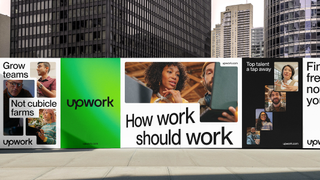
-

-

-
